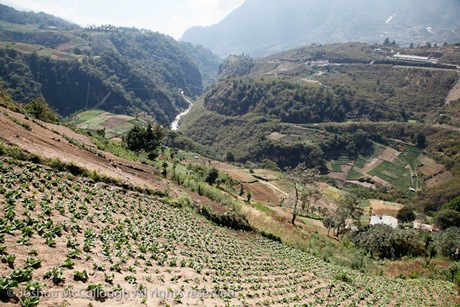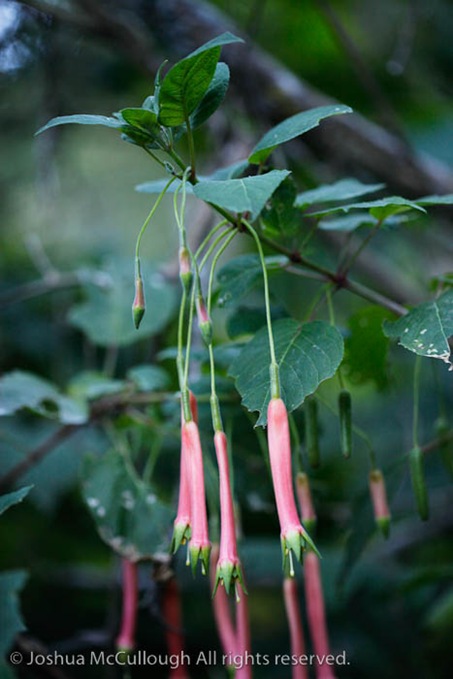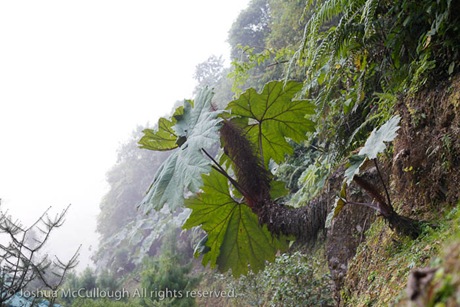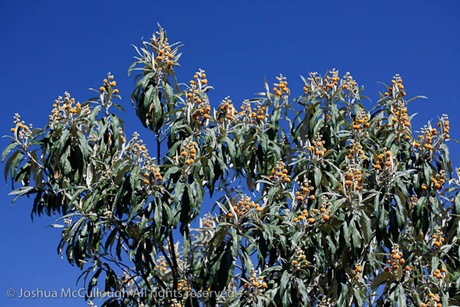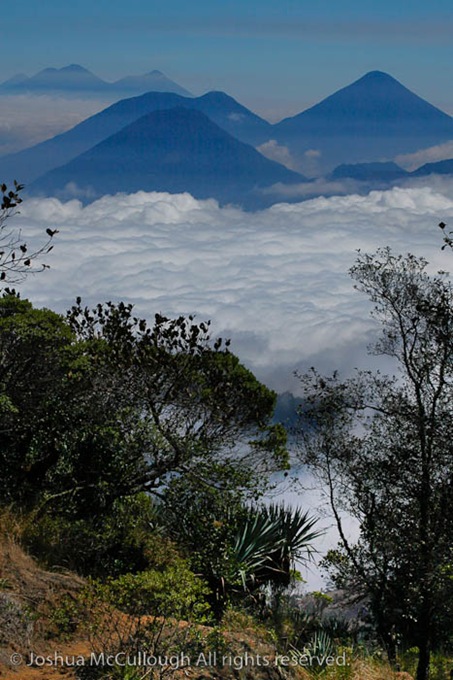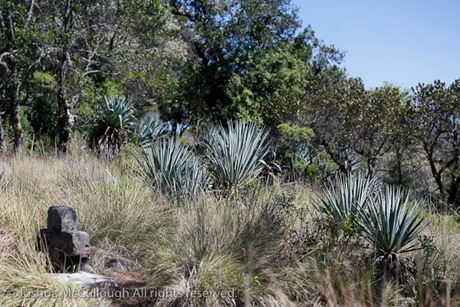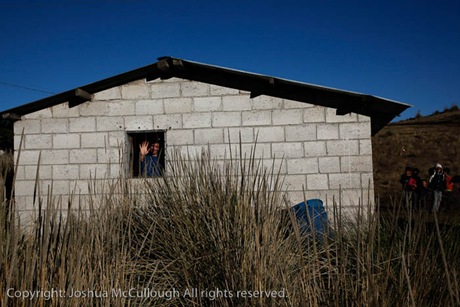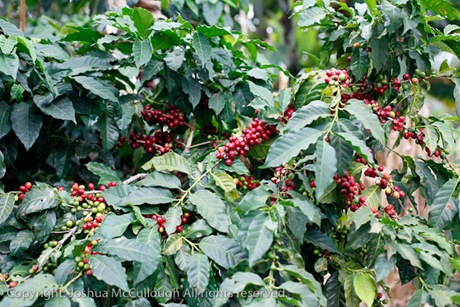[Note from Nan: We here at GGW were honored to have plantsman and photographer Joshua McCullough of PhytoPhoto judge our Picture This photo contest in November, and we’re equally delighted to have him join us as a Guest Contributor with this exciting account of plant hunting in Central America.]
Every step on this mountain is either up or down. A string of iconic, cone shaped volcanoes runs picture perfect through the Guatemalan Highlands separating the second largest city, know as Xela, from the majestic Lake Atitlàn. It is over one of these 11,600 ft verdant, steam puffing apices, Volcàn Zunil, that our path of exploration leads. Dave Demers and I have chosen this area of the Western Highlands because of the unique intersection of North and South American flora as well as the mix of tropical and freezing montane environments. And as the day breaks and the altimeter rises with each step, the results of this rarified combination are rendered all around us in the intricate detail of plant life.
The trail is littered with the olive sized aguatillo, a tiny and perfect avocado species that the splendid quetzal bird feeds upon.
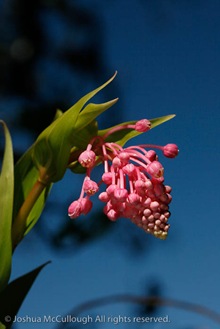 |
 |
Species of Smilacina (Maianthemum) [above] have left behind their conventional whiteness of the northern latitudes for a most luscious of pinks.
Strangely peach colored Fuchsia splendens [above] grow as epiphytes.
In the darkness of early morning we shouldered packs at the steamy volcanic hot springs surrounded by tree ferns, the gigantic leaves of Gunnera mexicana [above] and banks of indeterminate leaved ferns. But by mid-morning the climb had taken us over 10,000 feet and the trail wove through great tussocks of grass, the ground still frozen in the shade at our feet.
The orange flower clusters of the butterfly bush Buddleja megalocephala tower above us, the guide points out the volcano ahead releasing an ample burst of white gasses into the blue sky. A firewood cutter descends past, back piled high with the bundled lengths of a mornings labor in the forest.
The plant world here is dominated by a mad abundance of the composite flowers from the aster family. The frustration of separating one from another leads to practice of some newly learned, shall we say colorful, Spanish vocabulary. Shrub, tree, ground cover, vine and thistle- there seems no end to the variation of daisy on a stick here. It is clear we are in a center of diversity. Amongst the yellow, white, purple, orange fireworks of flowers tower Roldana gilgii with its fans of felted leaves and purple gland covered flower.
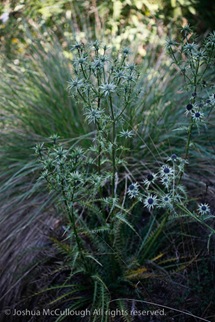 |
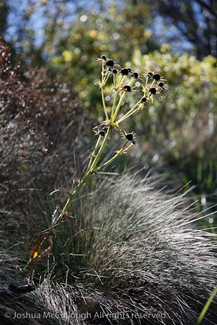 |
Jade green Eryngium contrast with the fine tawny grasses.
Woven throughout are the clustered orange bells of Bomarea [above], a vining alstroemeria relative. And every turn of the path yields yet another type of salvia.
Along the spine of a ridge in the midday heat we cross open areas of slash and burn agriculture. Small relic stands of old growth Guatemalan Fir, some of the southernmost examples of the endangered Abies guatemalensis, hold out along the edges of the blackened landscape.
We pass a shrine in the form of a concrete cross, the date indecipherable.
After ten and a half hours of hiking we bed down for night one in a cinder block, dirt floored structure smelling of gasoline in a town that’s name translates to Alaskan Summit. The source of the name is clear as darkness takes over and the thermometer from my wrist watch quickly drops below zero.
Dave summarizes the situation perfectly in this morning photo.
Another lower mountain range greets us, and as the light of the day becomes longer and our packs heavier, we begin to descend. The sparser alpine environ gives way again to bamboo and air plant encrusted treescapes.
Soon coffee plantations dominate in a half tamed forest. The mix of flowers at times seems more in keeping with an English border at summer peak but closer inspection reveal a decidedly Latin American mix including red Cuphea and tall Centropogon. At the valley bottom we bath in the river before reaching the coffee farming village that was to be our next stop. After dinner a truncated conversation in the darkness on coffee prices, life and the communal sauna passes through translation from my Spanish to the Quiche most speak here.
Day three finds us walking miles along dirt road to the final crest where the giant crater that is Lake Atitlàn spreads out below, embraced by three towering volcanic cones. What more will I take home with me than a smattering of seed and a collection of images? The answer, I decide, is one small window, a human lifetime-sized peek, at the ever flowing evolution where two colliding continents intersect with perhaps the oldest civilization of the New World. How many species are here, or gone, endeavoring to evolve just as the Maya to an ever changing world?

